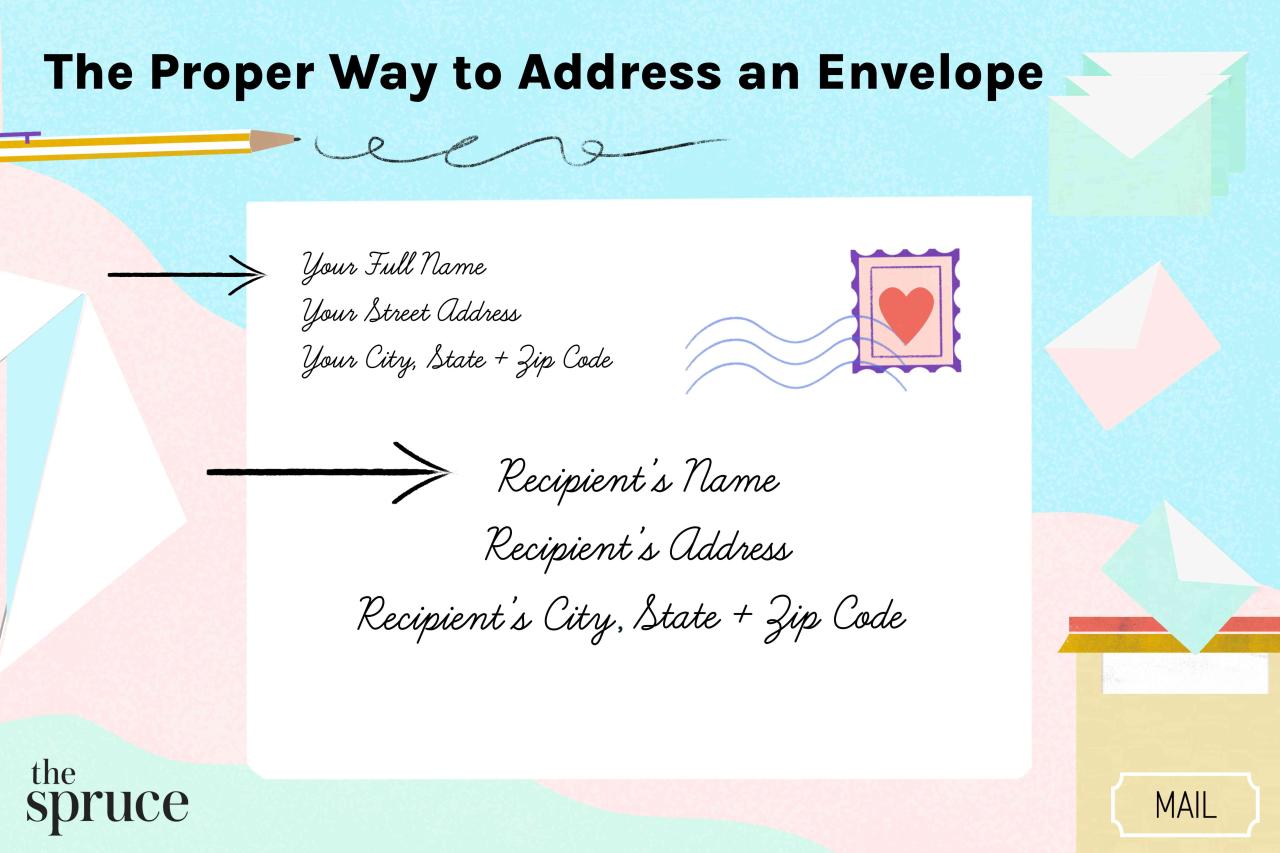Have you ever mailed a letter and wondered if it will reach its intended recipient because you’re unsure if you addressed the envelope correctly? Addressing an envelope may seem like a simple task, but there are specific rules and etiquette involved to ensure your mail arrives safely and promptly.
In this comprehensive guide, we’ll take you through the essential steps, from determining the correct placement of the sender’s and recipient’s addresses to navigating international envelope formats. By following these guidelines, you’ll gain the confidence to address envelopes flawlessly, ensuring that your correspondence reaches its destination without delay.
Addressing an Envelope: A Step-by-Step Guide

Introduction
Addressing an envelope correctly is crucial for ensuring that your mail reaches its intended recipient promptly. Whether you’re sending a formal letter, a birthday card, or a package, proper addressing ensures it arrives at the correct destination without delays or returns.
This comprehensive guide will provide you with a step-by-step walkthrough of how to address an envelope in English, covering all the essential elements and formatting guidelines.
Recipient Address
The recipient’s address should be the most prominent and legible part of the envelope. It consists of several lines:
- Name: Write the full name of the recipient, including any titles or prefixes (e.g., Mr., Mrs., Dr.).
- Street Address: Include the street number, street name, and apartment or suite number (if applicable).
- City, State, Zip Code: Use the official abbreviations for the state and zip code.
Return Address (Optional)
If you want the envelope to be returned to you if undeliverable, include your return address in the top left corner of the envelope:
- Name: Your full name
- Street Address: Your street address
- City, State, Zip Code: Your city, state, and zip code
Postage
The postage stamp should be affixed to the top right corner of the envelope. The amount of postage required varies depending on the size, weight, and destination of the mail. You can consult your local post office or check online postage calculators for accurate postage rates.
Additional Formatting Considerations
In addition to the address and postage, there are a few other formatting considerations to keep in mind:
- Font and Size: Use a clear and legible font in a reasonable size (e.g., 10-12 point).
- Alignment: Center align the recipient’s name and address, and left align your return address (if included).
- Spacing: Leave sufficient space between lines to maintain readability.
Conclusion
By following these steps and considering the formatting guidelines, you can ensure that your envelopes are addressed correctly and professionally. This will not only improve the deliverability of your mail but also add a touch of personal care to your communication.
International Envelope Addressing
Country Format
When addressing an envelope internationally, it’s essential to include the recipient’s country in a specific format. The country name should be written in uppercase, usually in the line below the city and postal code.
For example, if sending a letter to Germany, you would write “GERMANY” in the line below the postal code.
Postal Codes
Postal codes for international addresses vary in format depending on the country. Research the specific postal code requirements for the recipient’s country to ensure correct delivery.
For instance, Germany uses a five-digit postal code, while the United Kingdom uses an alphanumeric postcode system.
Additional Tips
To further enhance the deliverability of international mail, consider the following additional tips:
- Use a legible language: Write the address in English or the recipient’s native language.
- Avoid abbreviations: Spell out words like “Street” or “Postal Code” instead of using abbreviations.
- Check availability of services: Certain services, such as registered mail or package tracking, may not be available for all international destinations.
Addressing Special Mail
Registered Mail
Registered mail provides a more secure and trackable way to send important or valuable items. When addressing registered mail, include the following additional information:
- “Registered”: Write “Registered” in bold or clear font in the lower left corner of the envelope.
- Tracking Number: If available, include the tracking number in the address lines below the recipient’s name.
Registered mail must be delivered in person and requires a signature upon receipt.
Priority Mail
Priority Mail offers faster delivery times for both domestic and international mail. When addressing Priority Mail, include:
- “Priority”: Write “Priority” in bold or clear font in the lower left corner.
- Delivery Confirmation: If desired, indicate “Delivery Confirmation” below “Priority” to receive confirmation of delivery.
Priority Mail is handled with priority and typically arrives within 1-3 business days domestically.
Envelope Addressing Etiquette
Formal and Informal Addressing
The tone of your letter should guide how you address the envelope. Formal letters, such as business correspondence, require a more formal addressing style:
- Use the recipient’s full name with proper titles (e.g., Mr. John Smith)
- Include company or organization name if applicable
- Use a clear and professional font
For informal letters, such as personal correspondence, you can use a more casual addressing style:
- Use the recipient’s first name
- Use nicknames or pet names if appropriate
- Consider using a decorative or handwritten font
Addressing Businesses
When addressing envelopes to businesses, follow these guidelines:
- Use the company name on the first line.
- Include the department or specific person (if known) on the second line.
- Use a clear and legible font.
For example, you would address an envelope to a marketing department as follows:
ABC Marketing Department
123 Main Street
Anytown, CA 12345